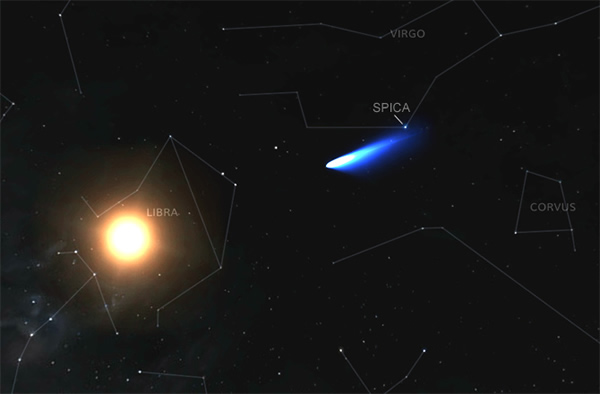Comet ISON: An Observer's Guide
The position of Comet ISON in the night sky in the Northern Hemisphere on Nov. 20, 2013 -- 8 days before perihelion.
Since its discovery in September 2012, Comet C/2012 S1 -- commonly known as Comet ISON -- has been keeping astronomers guessing. Will it become the 'Comet of the Century' or would it be a flop, second only to the infamous Comet Kohoutek of the early 1970's?
Even now, as the comet barrels toward the sun passing the orbit of Mercury, we still don't know how it will ultimately perform, but it is looking less likely to be the stuff of legend.
Fear not though, as ISON continues its relentless march toward the sun at over 220,000 kilometers (137,000 miles) per hour, it is blasting out some teasing little outbursts that, as astronomers watch with bated breath, bring it ever closer to becoming a stunning sight in our skies during early December.
But there's a catch! Before it graces our skies and becomes 'that comet' it first has to survive a close approach to the sun, an approach that may very well prove to be its downfall.
On Nov. 28, ISON will pass within 1.8 million kilometers (1.1 million miles) of the sun at perihelion -- less than one solar diameter. As it gets closer to the powerhouse of our solar system, the increasing levels of heat and energy will cause more cometary outbursts, possibly fracturing the comet, breaking it apart.
Should that happen, then these next few nights may be the last chance we get to see it. If it does survive then there will be a very good chance of a spectacular sight in the northern sky in December after ISON has completed its hellish swing around the sun.
At time of writing, ISON is a magnitude 5 object, moving through the constellation Virgo on its way to Libra and Scorpious before changing direction and heading northwards toward Ophiuchus, Hercules and up through Draco.
The magnitude estimates for comets can be a little misleading, so a little caution is recommended. The estimates are based on the overall brightness of the comet, but because the light from a comet is spread over the fuzzy coma it will seem fainter than forecast.
A magnitude 5 star would be a fairly easy to see naked eye target, but in reality, the comet is only just becoming visible at a very dark site owed to its fuzziness. Current estimates suggest it might reach the brightness of Venus, but again, this will be spread over the fuzzy blob, so it will still be fainter.
Whether ISON survives its trip close by the sun or not, in the next few days we still have a pretty impressive comet to look out for.
If you want to try and spot ISON for yourself before perihilion over the next few days, you will need to look low in the east before sunrise. Find the bright star Spica in the constellation Virgo and to its lower left is ISON that will appear as a faint fuzzy blob.
At the moment, binoculars or wide field telescopes (even bird watching telescopes) can be used to spot it, but as we head toward its closest approach it will become easier to spot with the naked eye, although this will be counteracted by the increasing brightness of the sun, drowning out the faint light of ISON.
For anyone wishing to try and capture this beauty on camera then try using a long focal length telephoto lens, anything above 200mm should work. Set your camera to its highest ISO setting, widest aperture and try exposures of about 10 seconds or so. Exposures longer than 10 seconds will cause the stars to trail so you will need to keep them short at longer focal lengths. You will need to have a bit of an experiment with the settings but that should help you capture it.
Once ISON has rounded the sun, and if it has survived, then we should be treated to a real beauty as it climbs higher in the sky through December. But for now, we must be content with sitting and waiting until the fate of one of natures most beautiful and enigmatic objects is decided in 8 days time.(Nov 20, 2013 01:04 PM ET // by Mark Thompson)












